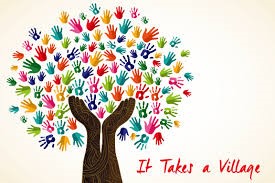 You’ve heard of the term “Solo Player.” In a sales environment, it refers to someone that does everything on his own and won’t include others in his work.
You’ve heard of the term “Solo Player.” In a sales environment, it refers to someone that does everything on his own and won’t include others in his work.
Over the years, Richard and I have run into many MGOs whom we would describe as “solo players.” In most cases they are not very successful. In fact, we see a tremendous amount of burnout from this type of MGO.
We believe that to be effective at major gifts work, many people from the organization need to be involved. One area where I think most fundraisers don’t work together very much is working on individual donor strategies. Let me tell you a story.
Several months ago, I was sitting in a meeting with a large, well-known non-profit. In that room were the top development person from the national office, four executive officers and their Development Directors, along with the CFOs from four major chapters of the organization and board members from those chapters.
The purpose was to discuss their recent development progress and to discuss a shared program that all of them were involved in. Part of that discussion was to talk about specific donors that were passionate about the organization’s program work, and get ideas on how best to approach those donors.
Do you have the picture in your head? All of these people sitting around a big table, and the conversation turns to discussing individual donors and how they should be approached to invest in the project.
I led the discussion along with one of the development directors from one of the chapters. We brought up one donor, gave the history of that donor, talked about her passions and interests, and then opened the discussion to everyone. Remember, no one in that room really knew that donor except that particular development director.
The questions were spot on. The ideas that flowed from those questions were quite amazing. In fact, a whole new strategy was born in that room for how to bring the donor along with the project and what would be the best way to solicit the donor. That discussion lasted 45 minutes… about one donor!
Some of the best ideas actually came from a couple of CFOs in the room. But what was even more amazing was the reaction from many of the executive directors. They were actually having fun in this discussion. And you could see light bulbs going off in their heads about how this major donor stuff works.
This went on and on until we had talked through four donors… some two and a half hours later!
After a bit, the VP of Development for the national organization came up to me and said that he had never witnessed anything like that session in his entire career. He later said, “we have to do this more often. We are better together than doing this on our own.”
Yes, this is absolutely true. You know, as an MGO you are mostly wired to get results through your own efforts. But that doesn’t mean you have to think through all your donor strategies alone. Yes, you have to lead on those discussions, but Richard and I believe that by bringing others together to think through your strategies with donors, you end up being more successful.
I mean, what major gift officer wouldn’t love to walk down the hallway and have the CFO or a program person – or even the CEO might poke his head out – and say, “hey, how’s it going with that donor of yours we discussed last week?”
Remember, we’re all in this together. When Richard was talking about building a culture of philanthropy last week, he kept saying to you, “where is the donor?” Getting others in your organization to help you craft your donor strategy is a great way to get people to start thinking like this.
Think about getting a team together once a quarter to talk about three to five donors you could use help on. Bring in program people, finance, the executive team and some board members. Get people who are strategic thinkers and who are “idea people” to help you.
You will get great ideas that you probably would not have thought of. And you will get organizational buy-in to the importance of donors and major gifts
That, to me, is a home run.
Jeff
Search Blog Posts

It Takes a Village
1 Comment
Trackbacks/Pingbacks
- Down and Dirty: 7 Steps to Conduct Effective Strategy Sessions - Veritus Group - […] couple of weeks ago I wrote a blog post called “It Takes a Village.” I stressed that you need…




This is the way we should work together